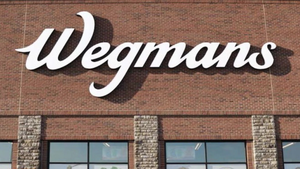A forum for contributed pieces from industry thought leaders, retailers, wholesalers and manufacturers. The views expressed are those of the authors.
Why retailers need to capitalize on loyalty program dataWhy retailers need to capitalize on loyalty program data
Lidl's new loyalty card in Scotland marks a milestone for hard discounters, but it's missing a key component of successful loyalty programs.
 Earlier this year, Lidl quietly launched a new promotional loyalty card within Scotland. Shoppers are encouraged to sign up for the new “Smarter Shopping” loyalty card to “Knock pounds off your big shop, again, and again, and again.” This effort comes on the heels of Lidl taking out a full-page advertisement last October to highlight the complexities of Morrison’s price-matching loyalty program, “Match & More.”
Earlier this year, Lidl quietly launched a new promotional loyalty card within Scotland. Shoppers are encouraged to sign up for the new “Smarter Shopping” loyalty card to “Knock pounds off your big shop, again, and again, and again.” This effort comes on the heels of Lidl taking out a full-page advertisement last October to highlight the complexities of Morrison’s price-matching loyalty program, “Match & More.”
Shopper loyalty continues to be a hot topic for grocers in today’s competitive marketplace. Now even hard discounters who previously shunned loyalty programs are investigating loyalty programs as a competitive means to better satisfy customer needs.
What is worrisome is that a Lidl spokesperson outlined that there will be “no data collection” from the program. The retailer has a great opportunity to use the Smarter Shopping card to better identify individual customers, understand their needs and make better decisions across marketing and merchandising. By using the data, Lidl could generate a much stronger return on their investment in the program.
A few American grocery retailers like Albertsons, Jewel-Osco, Pathmark and others recently discontinued their frequent shopper loyalty programs. Their decision to do so reflects a common issue in industry among retailers: failing to optimize program data to better understand and satisfy shopper needs across the organization. By only using the data from a loyalty card to drive the loyalty program, the program’s ability to deliver a strong ROI is greatly impacted as the data is only used in one single decision-making area of the company.
Loyalty programs house customer data that can fuel multiple key decisions across a retail organization that drive significant customer, competitive and financial value. From a strategic perspective, analysis of this data enables a retailer to understand where are the largest opportunities to grow the business from a category, customer and store perspective — this allows the retailer to allocate resources to pursue and capture the largest strategic growth opportunities.
From a merchandising perspective, the retailer can align their price, promotion and assortment decisions with the greatest needs of their most loyal customers. Using the shopper data, retailers can make price reduction decisions on the items that are most important to their most loyal customers; design, deploy and allocate trade funds to promotions that are most valued by loyal customers; and ensure that low productivity items in the assortment can be safely removed by determining if an item is, or is not, important to loyal customers.
Like the Supermarket News page for updates throughout the day.
Some leading retailers are doing a good job of using the loyalty data to drive targeted customer marketing campaigns, but for many others the data is not systematically used and, as a result, marketing communications are not personalized to the unique needs of the individual shopper. In addition, there are very few retailers who are successfully and consistently leveraging their loyalty data into the price, promotion and assortment decisions made on a daily basis by the merchandising team.
When retailers do take a customer-centric approach by using shopper data across pricing, promotions, assortment and marketing, we consistently see measurable improvements of a 1%-4% increase in overall sales and a 4%-7% increase in gross profits. For a $2-billion retailer this can equate to an additional $80 million in sales per year and an additional $30 million in gross profits.
A well designed loyalty program that consistently uses customer data to drive price, promotion, assortment and personalized marketing actions positions retailers to understand and best satisfy the needs of customers. This in turn gives retailers the best chance to compete in a sustainable manner over the long-term. Loyalty programs provide the foundation for true customer-centric retailing that lead to increased numbers of loyal customers and increased spend per customer. Lidl’s new program, if optimized correctly, has the potential to create a personalized touch point with the customer, allowing them to differentiate themselves from their competitors. In the end, there is no better path to future success.
About the Author
You May Also Like








